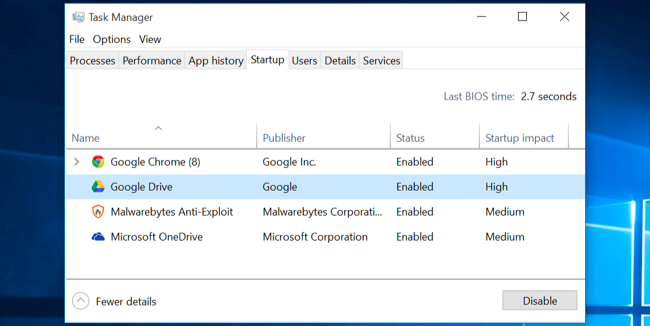If your computer is not as fast as the day you bought it, you are not alone. It happens to everyone. While this may be true, it is no less boring. The real question is “how long it is slower today than when you bought it; and can you tolerate the difference? Realistically, if you notice a difference in your performance, chances are you’re looking for a solution. Look no further, you have found your first step. If you are reading this, you are on the road to knowledge. Your first step is to inform yourself.
Find the cause.
From time to time I can say the obvious. Often, the obvious answer is the easiest to overlook. All the challenges of life have a cause. A recently noticed decrease in the performance of your computer is probably due to a recent change. Changes on your system may come from a newly added application, a Microsoft system update, a specific vendor application update, hardware changes, changes to your startup , changes to your registry or several other astrological modifications of the universe. .
The point here is to recognize that the change or combination of changes has affected your system. In major cases, the restoration of the system may be a consideration. Although this solution does not appear at the top of my list of immediate actions, if your system change is less than 24 hours old or can be assigned to a specific application immediately after installation, system restore can be your next step. best friend.
If the changes in the performance of your system have been slow in coming over a period of time, you can simply benefit from a good cleaning. Many independent technicians come to your home or office and offer these services for a minimal investment (usually between $ 50 and $ 100). Before you go to the big retailer to ask him to clean up his special $ 29 price, recognize the time and effort needed to dismantle your system and restore it (which they will not do for you). Add to that that most retailers do not offer a follow-up service if cleaning causes “unforeseen” system problems.
Do not assume immediately that you have a virus. Viruses can take any number of forms. As the name suggests, viruses can be as elusive as determining the strain of flu that you have contracted. In the end, such a distinction is not as important as simply finding a cure.
If you have reason to believe or strongly suspect that you have a virus, stop what you are doing, just as if you were calling your doctor’s office. If you like the information stored on your system and do not want to lose it or share it with information thieves, the best thing to do is turn it off. DO NOT restart until you have it in the hands of a qualified professional. virus or prove its existence. Err on the side of caution.
Finding the cause is a process, not a task. Making the wrong diagnosis can result in loss of information or vulnerability to information thieves. Do not let her scare you. The probability of an intentional attack is comparable to the probability of a home burglary. They occur, but being specifically targeted without cause is quite rare.
Correction of common causes.
Once you have determined the cause of your dilemma, you only have 3 choices. You can repair the computer yourself, ask someone else to fix it, or completely abandon the system.
I compare your computer repairs to those of your car or home. If you know how, you can really do well. If you do not, make no mistake … trying and failing often leads to more expensive repairs.
Imagine changing your oil and inadvertently drilling a hole in your oil pan. Your half-hour conversation at $ 20 has turned into a multi-hour repair costing several hundred dollars. Imagine that you are fixing a hole in your roof and spreading the adhesive on the side of your house, covering the side of the house and several windows. now is anything but simple repair of your “simple”. The same is true with your computer.
